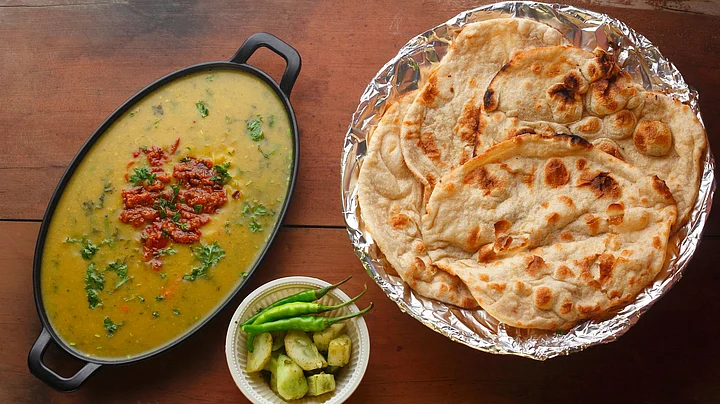Even though lentils are an intrinsic part of our Indian diet, they remain a slightly underrated ingredient.
There is no doubt that lentils are clearly a mainstay of most meals across the country, but the interesting part of the lentil story is that while we think lentils are an Indian staple, the truth is they probably came to us way after a lot of other civilisations.
But before we dive into the penetration of dal and lentils into different cuisines, let's talk about their benefits.
The Immense Benefits of Dal and Lentils
As a nutritionist I am all for dal and other lentils.
Why?
They are a great source of protein (particularly for vegetarians) as when combined with cereals (like rice and roti) they deliver complete protein that includes all 22 essential amino acids.
They contain virtually no fat, and are low in calories.
They are high in nutrition and deliver lots of essential nutrients and antioxidants. They are a rich source of potassium, calcium, zinc, niacin, and vitamin K.
They are particularly rich in folate, which helps the heart by bringing down homocysteine levels, a serious risk factor for heart disease.
They are packed with soluble fibre, which helps lower cholesterol levels run the blood and this help reduce risk of heart disease and stroke and also keeps the digestive tract working efficiently, thus constipation away.
Their high fiber content also prevents blood sugar levels from rising rapidly after a meal, thus keeps the blood sugar levels stabilised. Also they tend to be low in glycemic Index (rate at which the food increases the blood sugar level), so are good for diabetics too.
The best news about dals is they are extremely versatile - you can make everything from snacks to stews, pilafs, and salads from them.
And they are, of course, super tasty!
Dal is Everywhere!
I remember eating a meal that paired a simple boiled dish of puy lentils (masoor dal) with a delicious and elaborate dish of gnocchi pasta with chickpeas, at a small restaurant in Spoletto, Italy a few years ago.
Both were brilliant, and opened my eyes to the fact that lentils and pasta are a traditional pairing in Italian cooking and that they are as important a part of Italian food as pasta and pizza.
The Lebanese love them too, using them in hummus and falafel. Similarly, the Egyptians have their own form of khichdi called Koshari.
Clearly, lentils are a centerpiece of many cuisines around the world.
In India, of course, lentils are omnipresent. A foodie friend tells me that in Bengali cuisine lentils begin appearing right from breakfast, by way of dal puris (flatbread stuffed with ground split peas), and a daal bhaatey (a muslin pouch of lentils boiled with rice, ghee or mustard oil, a pinch of salt, and a green chilli) is an extremely common and popular lazy day lunch.
Bihar swears by ghugni (black gram or dried yellow/white peas cooked in a gravy) and sattu (powdered baked gram). And surely everyone's tasted Rajasthan's tasty gate ki subzi, made with besan (ground chickpeas) and dal panchmali.
Similarly the kadi and khatti meethi daal made with toor daal is a staple eaten by Gujaratis wherever they live. And show me ONE Punjabi household that doesn’t cook rajma masala at least once every week, besides their world-famous maa ki daal (black dal with a delicious tadka of butter and cream).
And of course, chole bhature finds a permanent mention in every list of foods to eat before you die, and so does a well-made khichri, which every household makes differently.
Lentils are amazingly versatile. If you've travelled to Jaipur you must have had besan chakki, and in Gujarat most snacks (known as farsaan) are made with dals.
This includes dhokla, khandvi, khaman, dal kachori (stuffed with urad dal) and mathiya papad, a crispy delicacy made with urad dal flour and mathiya dal flour.
Cut to Mumbai - their famous mung dal wada and misal pao (made from a mix of curried sprouted lentils) are everyone’s favourite snacks, and so is puran poli made with jaggery and yellow gram dal, a dessert loved as much as the dal halwa is loved up north.
Other inventive uses of dal include making papads, delicious Manglorian chutney made with taute (large cucumber), and tempering food with dals (would upma be even half as exciting without the crunchy bits of dal?).
So I say continue to enjoy dal and lentils to the fullest, whichever way you like them - because their benefits are bountiful.
(Kavita is a nutritionist, weight management consultant and health writer based in Delhi. She is the author of Don’t Diet! 50 Habits of Thin People (Jaico), Ultimate Grandmother Hacks: 50 Kickass Traditional Habits for a Fitter You (Rupa) and Fix it with foods.)
(At The Quint, we question everything. Play an active role in shaping our journalism by becoming a member today.)
